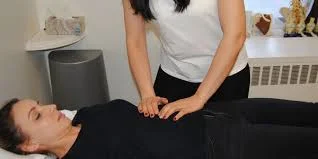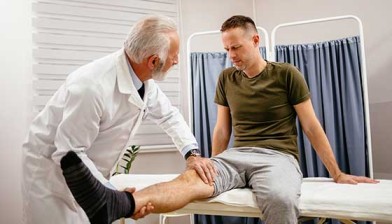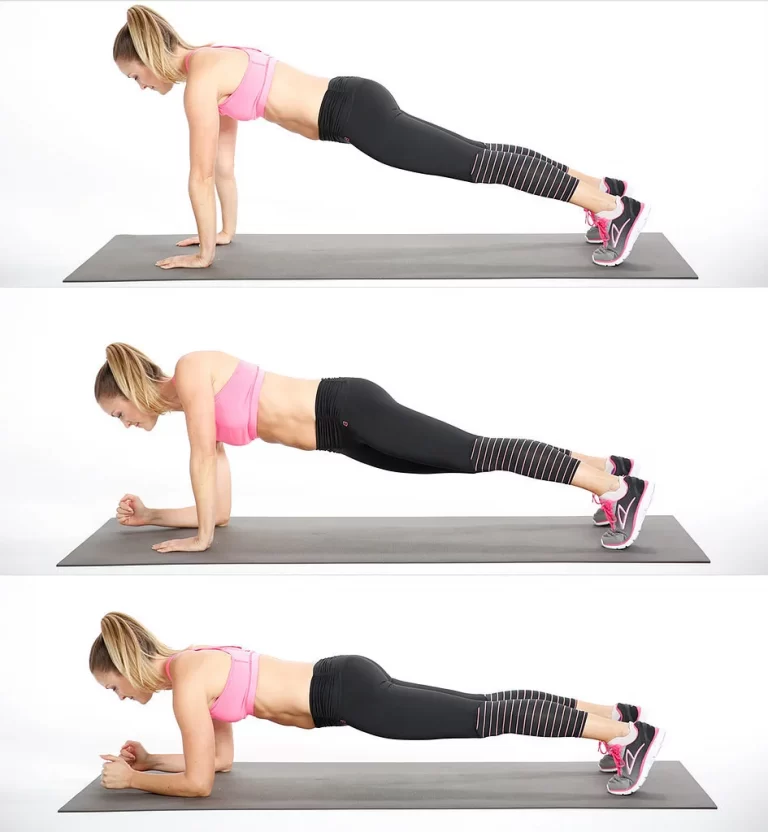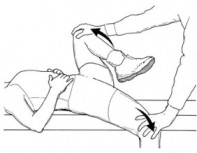Visceral Manipulation Techniques
What is a Visceral Manipulation Technique?
Visceral manipulation is a therapeutic approach that focuses on assessing and treating the internal organs of the body, including the liver, stomach, intestines, and other vital structures. It involves gentle manual techniques designed to assess and improve the mobility and function of the internal organs, as well as their surrounding connective tissues.
There are a variety of visceral manipulation techniques that may be used by practitioners, including:
- Soft Tissue Mobilization – This technique involves gentle pressure and manipulation of the soft tissues surrounding the organs, including the fascia and connective tissue.
- Organ Specific Mobilization – This technique involves the specific mobilization of an individual organ, using gentle pressure and movement to improve its function and mobility.
- Diaphragmatic Release – This technique involves the manipulation of the diaphragm muscle, which can affect the movement and function of the organs in the abdomen.
- Pelvic Mobilization – This technique involves gentle manipulation of the pelvic organs, including the bladder, uterus, and prostate, to improve their function and mobility.
- Neural Manipulation – This technique involves gentle manipulation of the nerves that supply the internal organs, which can help to improve their function and reduce pain.
Overall, visceral manipulation techniques aim to improve the health and functioning of the internal organs, as well as the surrounding tissues and structures, to promote optimal physical and emotional well-being. It is typically performed by trained healthcare practitioners such as osteopaths, physical therapists, or chiropractors.
- Specific methods should be used to assess how abnormal forces may be affecting normal body functions forces or affecting the skeleton, soft tissues, and organs. Methods should then be used to gently help in releasing the tension lines and improve visceral mobility. These gentle visceral manipulation methods must potentially improve the functioning of particular organs, after that the systems of the organs that function within the organs, and improve the structural integrity of the whole body.
- Visceral manipulation is occasionally referred to as organ massage or abdominal massage. It is a gentle massage executed by a massage therapist, osteopath, or other trained practitioner.
- The goal of the visceral manipulation process is to facilitate normal muscle tone and movements both within and between the internal organs, their connective tissue, and other systems of the body.
- Visceral manipulation is utilized to find and release dysfunctional patterns throughout the body that limit movement and reduce energy. It also encourages the patient’s natural mechanisms to improve the functioning of organs, reduce the adverse effects of stress, improve mobility, and improve metabolism.
- When conducting visceral manipulation, the therapist will use upward and downward, backward to frontward, and sideway to sideway movements to massage the organs and release tension or limitations to return the organ to optimal functioning.
- The type of touch the practitioner performs contains compression, mobilization, and stretching of the tissues. Depending on the patient’s problems, the patient might position such as standing, sitting, or lying down.
- Inflammation from infections, irritable bowel syndrome, cracked gastrointestinal tract, or trauma from accidents or surgery affects the normal movement of the organs and causes limitations. Our visceral organs move with us, when the person turns to look beyond the right shoulder, the liver, gallbladder, and ascending colon move with the person. Because all organs transfer branches, immobility of the liver might affect the small intestine and sigmoid colon too. When the person has restrictions it causes balance and may actually lead to muscle and joint dysfunction.
- Scar tissue surrounding a trauma site restricts normal blood and nutrient flow. The natural healing process sets whatever requires for the setting of the scar tissue as fast as possible, with scar tissue like a cement shape pistol that fills all the holes. This tends to tight, immobile scar tissue and limits the normal movement of the organ, although makes small of the affected organ. The affected organ’s stiffness will directly impact neighboring organs and finally, the scar tissue may affect joint mobility and muscle length. In the long run, this should happen to local issues in the area, like the gallbladder not emptying all of the bile stored inside, or global biomechanical imbalances that predispose the person to harm down the line, like the sigmoid colon restricting the hip rotation and finally causing sciatica of the left leg.
- Organ mobility should be evaluated and treated with visceral manipulation by physiotherapists.
Condition treated with Visceral Manipulation Techniques
- sciatica
- carpal tunnel syndrome
- joint pain
- neck pain
- gastroesophageal reflux diseases
- post-traumatic stress disorder
- nausea
- constipation
- anxiety
- depression
- concession
- post-infection
- sports injury
- scar tissue
- whiplash injury
- traumatic brain injury
- women health issue
- post-operative case
Visceral Manipulation for Digestive Disorders
- visceral manipulation involves encouraging the internal organs specifically the stomach and large and small intestines to their best function, it is effective for that person who suffers from digestive disorders.
- Digestive disorders, like Irritable Bowel Syndrome, cause a range of symptoms that should reduce the quality of life, involving nausea, stomach pain, headaches, bloating, gas, acid reflux, diarrhea, constipation, and more.
- Symptoms impact both males and females of all ages and must be a lifelong struggle. Poor digestion should be caused by diet, stress, medication, food sensitivities, genetics, and medical conditions.
- Traditional treatment options for digestive issues involve fiber supplements, probiotics, laxatives, increased water intake, and a strict diet.
- Visceral manipulation is a generally recognized treatment for digestive problems, visceral manipulation must positively affect those people suffering from chronic constipation, stomach pain, and other gastrointestinal issues.
- the abdominal massage should be useful in treating chronic constipation by stimulating peristalsis muscle contractions that push food via the digestive tract, reducing colonic transit time, raising the frequency of bowel movements, and reducing discomfort and pain connected with constipation.
- the abdominal massage lessens the severity of gastrointestinal symptoms, mostly constipation and abdominal pain syndrome, and raised bowel movements. For women in particular, visceral manipulation has been proven to help decrease the abdominal pain and bloating and increase the quality of life.
- Strong, functional digestion is an essential part of overall physical health. Links between digestive health and mental health should also be found. The mind and gastrointestinal tract connection indicate that digestive issues should cause depression and anxiety.
The Mind and gastrointestinal tract Connection
- The connection between the brain and the gastrointestinal tract is difficult. Has the person ever had an emotional feeling regarding a situation or person or felt butterflies when he/she was tense This is the physical presentation of how the gastrointestinal tract should affect the mood. While it is usually considered a feeling, the mind, and gastrointestinal tract connection is a lot more scientific than that.
- The brain has a natural effect on the stomach and intestines, and the gastrointestinal tract is very sensitive to emotions. Because of mind and gastrointestinal tract interaction, a person’s stomach or intestinal ache must be the cause or the product of anxiety, stress, or depression.
- The abdominal nervous system is a system of neurons that handles the function of the GI tract. It is considered the second brain because 100 million neurons in the abdominal nervous system are not able the person to feel the internal world of the gastrointestinal tract and its contents.
- The abdominal nervous system should also be able to control gastrointestinal tract function alone of the brain, meaning it has a brightness that should be markedly different rather than the rest of the body.
- another, ninety percent of the fibers in the prior visceral nerve conduct information from the gastrointestinal tract to the brain, but should not send the other way surround. Because of this, unpleasant data resulting from poor digestion should travel to the brain and affect the emotions and state of mind.
- It is recommended that the gastrointestinal tract be as effective to the mood and the head. a healthy gastrointestinal tract must lower the reaction to stress, improve memory, and reduce social anxiety. Therefore, using visceral manipulation to help healthy digestion must also affect mood, stress levels, and anxiety.
- Visceral manipulation is regarded as normally safe for most people. However, therapists are prepared to work cautiously and will not perform the treatment if the people feel it is unsafe for them. some contraindications involve acute infection, inflammation, recent abdominal trauma, and pregnancy.
- Consult the healthcare provider before exploring visceral manipulation. Always provide the complete health history to the universal practitioner before receiving treatment
The purpose of the Visceral Manipulation Techniques
- Visceral manipulation techniques should be appropriate in most clinical areas as it fulfills the need of various people in the generations, and should be held by a broad variety of healthcare professionals. These involve osteopathic practitioners, allopathic practitioners, doctors of chiropractic, doctors of Oriental medicine, naturopathic practitioners, physical therapists, occupational therapists, massage therapists, and other professionals certified in bodywork.
- Owing to the special nature of visceral manipulation, this therapy must very effective at finding and treating the prior cause of pain or dysfunction. The assessment of methods used in visceral manipulation, named general listening and local listening, are the keystones of this modality. The general and local listening support the therapist in finding the primary limitation, as the therapist’s ‘listening’ hands lie down passively, sensing and examining minute however the precise movements of visceral mobility and motility, as well as fascial restrictions spreading throughout the body. A restriction of an area show lowered flexibility that will drag the surrounding tissue toward it, and the therapist will sense this under their hands. The body snatches the lesion, meaning that when there is tension in the front of the body, it causes the body to bend forward, and when the tension is only one side either right or left, it causes the body to twist toward that side either right or left. The person will look as if the therapist’s trying to cover their body surrounding the tense area, and the therapist must feel this tension dragging the restricted area toward his/herself.
- Using anatomical facts together with skilled hands, the therapist must be able to specify which structures the body is most concerned with at the time of examination, which may or may not be present where the person is experiencing symptoms, but where the core muscle or primary tension is found that causing the symptoms. ‘Listening’ must be used not only to train the therapist on the areas that require treating but also to permit the therapist to feel the most suitable how the tissues require to be released. via this very specific, localized treatment, with broad-reaching positive effects that must be seen throughout the entire body.
- The evaluation and treatment should be carried out with a supine position on the treatment table. The therapist should create deep contact with the body, but this deep contact should not be interfering and just rarely be painful.
Benefits of the Visceral Manipulation Techniques
- Reduced chronic muscle pain
- Less swelling and constipation
- Improvements with uterine fibroids and cysts
- Reduced joint pain
- Relieved sciatica Pain
- Relief from carpal tunnel syndrome
- Less risk from old injuries
- Reduction symptoms of fibromyalgia
- Improved digestion
Aids With Digestion
- Digestion should be benefited from visceral manipulation of the abdominal area. constipation and bloating must be reduced after receiving a 15-minute abdominal massage two times daily for three days.
Relieves Back Pain
- Visceral manipulation might also be useful in the treatment of upper back pain. Upper trapezius muscle function must be improved, and cervical spine pain must be decreased after a single osteopathic visceral manipulation session centered on the liver and stomach part. Lower back pain should also be managed from the front of the abdomen when performing on the muscle tissue that connects via the body and into the lower back.
Helps With Menstrual Cramps
- People who had massages at least six days before their menstrual cramps carried reported having held less cramping and pain because of the massages rather than those who did not take massage.
Helps Reduce Bloating
- Those people who obtained a 15-minute abdominal massage two times a day for three days said they felt less swollen and improved their general health. The massage had no effect on pain, fatigue, body weight, or nausea among the participants.
Relieves Constipation
- Visceral massages should also benefit constipation problems, as those who had utilized abdominal massage had more bowel movements rather than those who did not use the techniques
What happens during visceral manipulation?
- First, the person will be lying on the table with his/her face showing upward on a massage or exam table. the therapist should feel his/her viscera, a person’s primary internal organs discovered in the abdomen by lightly pressing the abdominal muscles.
- the therapist’s manual poking, pushing, and massage actions do three things
- Discloses visceral adhesions. A well-trained therapist should know what healthy, soft organs feel like, and will be able to define whether the person’s organs have tight areas.
- therapists Help the person to find her/his own tender spots. the therapist will communicate with the person throughout the process, asking whether you feel tenderness here or there when the therapist presses. Speak up, and explain what you’re feeling, even if it’s slightly detectable.
- Breaks up adhesions. Massaging and squeezing stretch the collagen fibers that make the fascia, which loosens tightly bound fibers to break up adhesion formation. This releases the organs and gives them grants to move more freely.
- Minor adhesions might resolve after one session. Tough, rigid adhesion formation might need several sessions plus self-manipulation between appointments. the therapist should guide the person.
What should a person expect during a session that utilizes Visceral Manipulation?
- First, the person will want to wear flexible comfortable clothing. During the session, the person should able to stay fully clothed. Some therapists might have suggested wearing a gown. Generally, the precise area of the body must be exposed, similar to when the person obtains a massage. Yet, some therapists might also work on the person via a thin layer of clothing.
- Then, the physical therapist or osteopath should aim for treatment and should do a full assessment to specify which places to treat. Common sites of visceral manipulation treatment involve the rib cage, abdomen, or pelvis.
- If the outlook of the treatment addresses the scar tissue, the person might experience some tenderness or mild pain. Yet, most people say it feels good, as it is releasing up tight tissue that might be the cause of pain. Scar tissue should also cause limitation in the muscles contributing to back pain, sciatic symptoms, and hip or knee pain.
- Some visceral manipulation approaches for limitations in the digestive route and rib cage some approaches should a deeper touch while some approaches touch should much lighter. the person might feel tenderness, tightness, or even a gurgling of their tummy as the tissues start to relax.
- ask the person as do you experience numbness, tingling, or swelling as some of the symptoms. Visceral manipulation therapy must focus on nerves, arteries, or lymph vessels. When executing techniques in these areas, the touch must much lighter. It should feel like a soft stretch or pressure resulting in mild tingling, numbness, or heat as blood flow raises to the area.
What to expect after the session?
- It’s important to note everyone’s experience varies. Treatment is unique to every person based on symptoms and injury. the person might experience a recurrence of the pain initially arrived in for a relaxation of the symptoms the therapist explained However, either response is positive. It means therapists should address the proper areas for the manipulation. the person should experience some pain relief after the treatment session ends. It should necessary that the person drink lots of water to support the process of the treatment. It should also be suggested that the person continue treatments one time per week or two times per month until the pain subsides and function should restore.
Visceral Manipulation Alternatives
- Pain relief and belly problems should be relieved through a variety of methods, involving visceral manipulation. Here few awesome choices for visceral manipulation.
- Yoga: Regular yoga practice might also support the body and mind to relax and strengthen.
Yoga for visceral manipulation
seated forward bend (Paschimottanasana)

Instructions
- From the Staff pose yoga, inhale the arms up beyond the head, lift the arms, and lengthen up via the fingers and peak of the head.
- Exhale and swing at the hips, gradually lowering the body towards the legs. touch the hands to the toes, feet, or ankles.
- To deepen the stretch: A) Use the arms to slightly drag the head and body nearer to the legs. B) Press out via the heels and slightly pull the toes towards the person.
- Breathe and hold for 3-8 breaths.
- To release: A) Gradually roll up the spine back into the Staff pose. B) Inhale the arms back beyond the head and lift the body back into the Staff pose yoga.
Benefits of seated forward bend
- Seated forward bend provide a deep stretch for the whole posterior side of the body from the heels to the neck. The forward bend relaxes the nervous system and feelings and stimulates the reproductive and urinary systems.
- avoidance: Recent or chronic injury to the arms, hips, ankles, or shoulders.
- Modifications of the seated forward bend: If the person should not arrive at the hands to the feet: A) Use a yoga belt surrounding the feet and maintain on to the strap with both hands. B) Bend the knees sufficiently to reach the feet with the hands and place the head on the knees.
sleeping tortoise pose (suptakarmasana )

- executing the Pose: Follow the below-mentioned steps for ideal results when reaches to performing the sleeping tortoise pose:
- Sit on a yoga mat in a cross-leg position.
- Grab the right foot with the left hand, and drag the foot into the chest.
- Thread the right arm under the right leg, and put the right hand on the ground near the right hip.
- While still holding the right foot with the left hand, gradually walk the right leg up the right arm, until the person tilts the head in front of the foot.
- Place the left hand on the ground. clasp the left foot with the right hand, and repeat the process traced in steps 3 to 5 times.
- Carry both shoulders in the middle of the legs. Reposition both hands on the ground, so the hands must reach a shoulder-width distance separated.
- Flex the elbows, utilizing the arms to lower the forehead to the ground gradually.
- Move both arms surround the outside of the legs, and clasp the hands behind the lower back.
- Hold the position and breathe extremely.
- Leave the poses by changing the directions.
- Meditation: Meditation is useful for reducing stress, and it may also assist with physical discomfort and sleep.
How to self-administer visceral massage
- Do a plank with the middle side beyond the ball. Gradually lower down the body onto the ball until the person feels relaxed face downward on the floor with the ball fixed in the abdominal cavity.
- Rest the head on his/her arms, and relax the body into the ball as broadly as the person should be able to do. Move only in ways that the person should tolerate. the abdomen will feel more flexible over time, so go slowly.
- Use the breath to make tension and relaxation. the person will see what feels good and permits him/her to relax into the ball after proper positioning .repeat this 2 or 3 time.
- Once the person gets to know his/her abdomen and should be conscious of the tender spots, test with different movements. the person should gradually slide or rock movement to backside and forward, side to side, or try dropping lower into the ball every time. The key point must move slightly and gradually, repeating movements that are tight and not painful
- Imagine the abdomen separated into quadrants like upper and lower all crossing at the belly button. Be sure to spend a few minutes in each individual quadrant.
- If it hurts, control it instantly. Pain means something’s not right, so call a doctor to check it out.
- This is a good practice to integrate for a few minutes 2-3 times per week, and there are advanced approaches that the persons should learn from a professional trainer. This isn’t a daily practice. The main point is to get the connective tissue surrounding the organs to restructure, and the person requires one day or two days in between sessions to permit collagen fibers to rearrange.
Self-treatment for visceral release
- As visceral mobilizations are a specialized procedure, patients are usually confused or ask the therapist what the patient should be able to do on their own self to re-create the visceral treatments at home in order to maintain profits from treatment sessions.
- Self-Releases With a Small Ball: self-release balls work great for visceral manipulation, but the person should also utilize a stress ball. Ideally, a small, soft ball should be instructed as the approaches should be pain-free and not cause harm to the sensitive abdominal tissues and tissue contents.
- the therapist should instruct the person in which areas might be beneficial for the person to execute visceral massages OR if the person shouldn’t currently see a therapist should try slightly rolling by the finger via the abdomen and focusing on regions that tend to tight or tenderness. If finishing without guidance, it is necessary to maintain slight pressure and avoid pain stimulation. Once the person discovers a tight and/or tender location, maintain a static hold and constant downward pressure on the ball. See if the person should feel the tissues under the ball start to relax. It will almost feel as if the tissues below start to soften and the ball should sink a little further downward. Once the person reaches that point, should move on to the next location. Work via the entire abdomen for 10-15 minutes at a time.
Self-visceral Releases Combined with Yoga Pose
- Yoga poses should also be used in conjunction with visceral release techniques. A yoga pose usually instructed is the sphinx pose. If this pose is too extreme, the release should be initiated by first lying flat on the stomach with a ball located at the region of tightness/tenderness. Again, waiting for a melting tissue or relaxing tissue type of sensation of the target tissues. Once the person achieves the target tissue and should tolerate greater amounts of pressure without the onset of pain, the person should push up onto elbows for a deeper release. The sphinx pose itself will also give a nice stretch to the abdomen and hips
Deep Breathing exercises for visceral manipulation
- Diaphragmatic breathing must benefit the relaxation and descending management of the central nervous system, allowing more effective releases of the viscera. The motion of the visceral organs that happens during good diaphragmatic breathing should act as a massage to the visceral organs as well as the tissues/organs tend to move along with the diaphragm
Diaphragmatic Breathing
Patient Instructions:
- Position one hand on the stomach and the other hand on the chest. Touch the stomach to elevate and drop down with each individual breath. Persist for 1 minute.
- When the person does breathe in and inhale: the stomach moves out. The hand on the chest should stay still and hold its position.
- When the person breathes out or exhales: Tighten the stomach muscles and feel the muscles drag inward. The hand on the chest should stay still and maintain its position.
- Breathe in, touching the stomach push out. As you breathe out or exhale, say the following sounds and words, remaining conscious of the stomach slightly dragging inward.
- Start breathing with painless sounds like “sss” and “shh”
- typically perform up to vowel sounds like “ahh” and “ooh”
- execute lessons up to single words like “hello” and your first name etc
- rhythmically work up toward longer words, phrases, and sentences
Why do people use organ manipulation techniques?
- Visceral manipulation regains normal movement and improves the function of the internal organs.
- the bodies depend on pressure systems for breathing and keeping the organs in place. Specifically, in the abdomen, this is necessary. The negative pressure from the thoracic cavity should responsible for breathing. This negative pressure system also maintains the liver, stomach, pancreas, and spleen, which are relatively heavy organs balanced under the diaphragm. If the positive pressure from the abdomen overreaches to the degree of the negative pressure, the organs should be dropped down and cause pain. Raised abdominal pressure aggravates lower back pain caused by injury to the disc.
- With visceral manipulation, therapists should reform the interplay from the pressure systems and promote the normal movement of the organs.
FAQs
How does visceral manipulation by his/her own self?
6 to 8-inch diameter ball, either bubbles or inflated. The ball should maintain some bloating given to the person and should be able to squeeze the ball into the organ in which he/she wants to do manipulation but not flatten it.
Towel or yoga mat.
Is Visceral Manipulation Safe?
When done by a good massage therapist visceral massages should be or Manual Osteopathic Therapist. But, before coming for the treatment, carry notice of the following:
If the person has just experienced abdominal surgery, avoid obtaining an abdominal massage.
If the person is a woman and pregnant or has any chronic health conditions, consult the doctor before selecting an abdominal massage appointment.
ignore eating for a few hours before the massage to avoid nausea.
What conditions should be useful for visceral manipulation treatment?
visceral manipulation is known to be helpful for many disorders, involving: Musculoskeletal disorders, digestive disorder
Emotional issues anxiety, depression, post-traumatic stress disorder, etc.
Acute disorders, Women’s health issues, Post-operative and post-infection scar tissue
How long does visceral manipulation take to work?
the number of visceral manipulation sessions taken to see results differs from individual to individual. Based on the diagnosis and treatment requirements, the therapist will capable to specify what is best for the person. large numbers of people experience improvements in just some sessions of visceral manipulation procedure.
What are the side effects of visceral manipulation?
If executed by a skilled and trained practitioner, there should be slight to no side effects to visceral manipulation. Some patients have reported experiencing some brief soreness as well as headaches.
How does visceral manipulation feel?
Visceral manipulation is a soft gentle compression which should feel like a stretch or slight pressure in the abdomen. This stretching and compression might result in some mild heat or tingling to the site because of raised blood flow.
What is the contraindication for the visceral manipulation approach?
Visceral manipulation avoidance involves infection, inflammation, and signs of recent trauma. experienced therapists should take each and every precaution to assure that the person should be safe.
Who can benefit from visceral manipulation?
visceral manipulation approaches must be beneficial to treat such a numerous variety of conditions, that’s why visceral manipulation techniques should effective for most aged people. Our day-to-day energies and occurrences should usually cause tissue restrictions and bodily imbalances beyond time. Visceral manipulation manages those restrictions and imbalances and encourages bodily healing.







